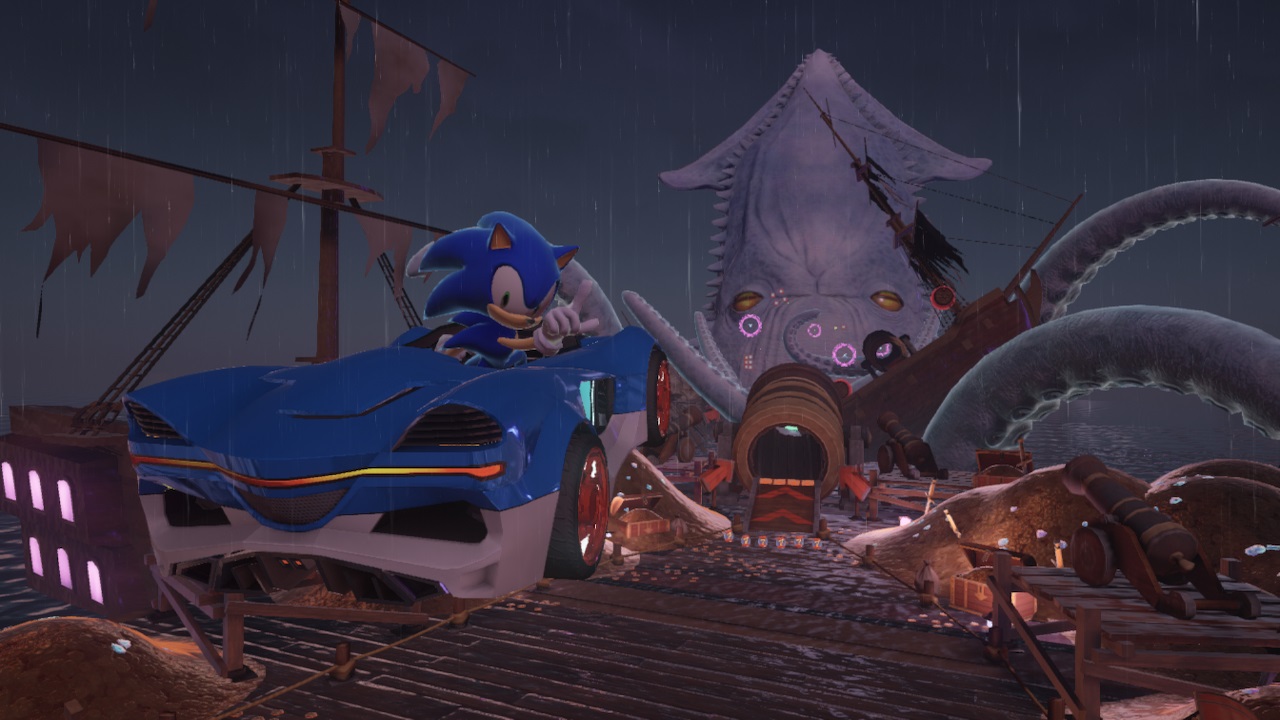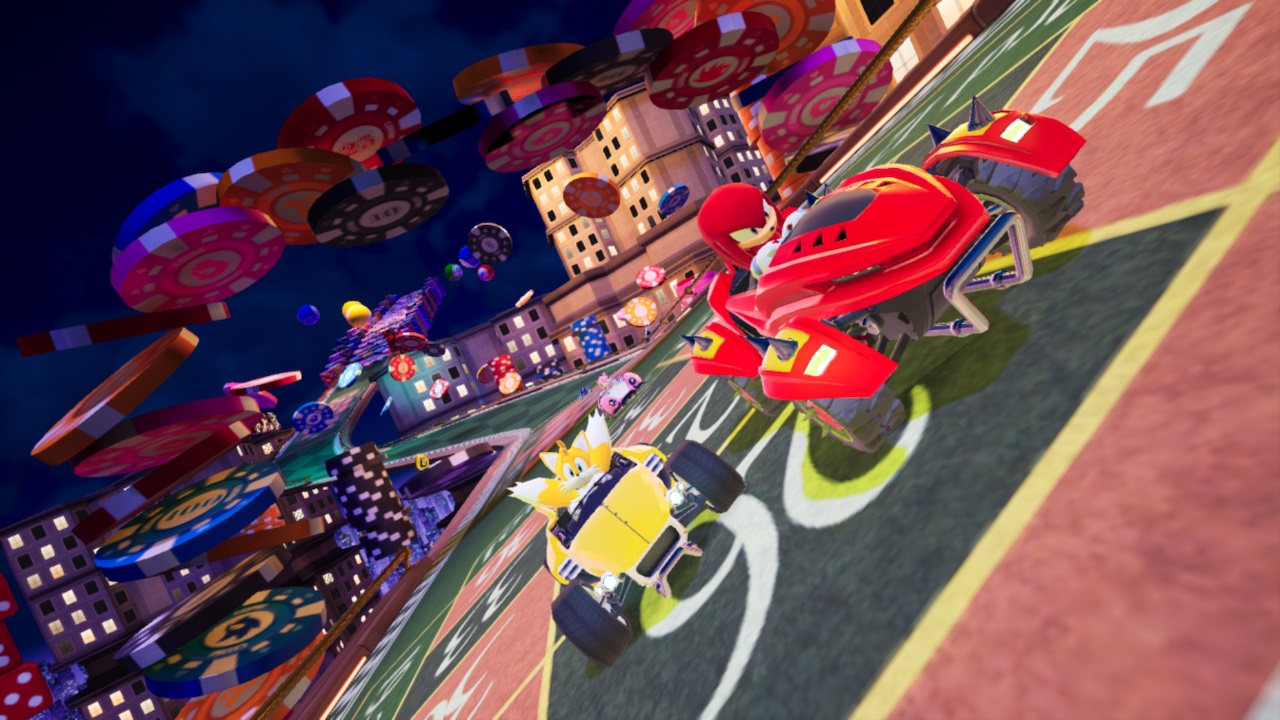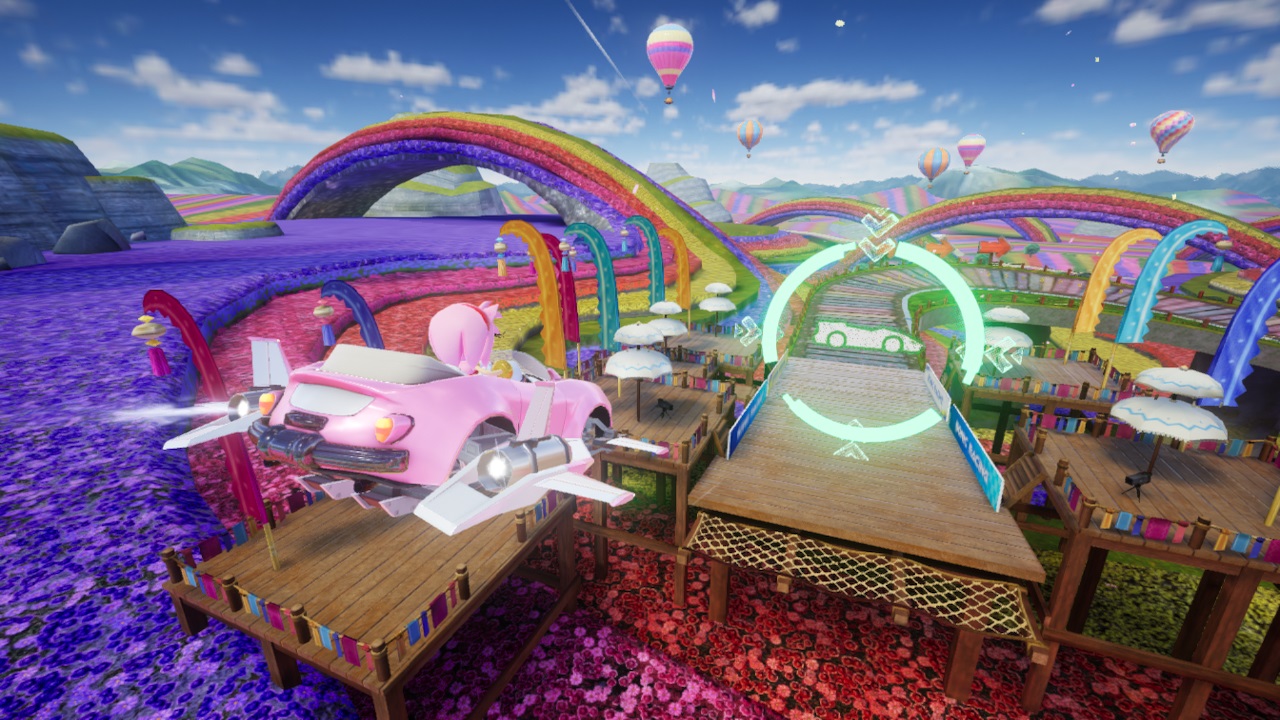I didn’t know what to expect when I sat down for my session with Sonic Racing CrossWorlds at Gamescom. Within a few minutes, though, the game made its point crystal clear: it’s here to push speed to the extreme. My thirty minutes behind the wheel were loud, frantic, and constantly surprising, the kind of chaos that either leaves you grinning or gripping the controller in panic.
What makes CrossWorlds stand out is how it constantly tries to break the rhythm you expect from a kart racer. The Travel Rings are the clearest example. In most games, three laps mean repetition you learn the track, improve each lap, and push for perfection. Here, lap two hurls you through a glowing portal and suddenly you’re somewhere else entirely. A desert track transforms into a water-heavy course, a bright city street bends into a canyon, and before you know it, you’re spat back into the original layout for the final sprint. It’s disorienting in the best possible way, a refusal to let you settle. The result is that no lap ever feels routine, and no race is ever “just another circuit.”
The game also thrives on transformation mechanics. Your kart doesn’t just stick to the asphalt but it adapts. One moment you’re drifting through hairpins, the next you’re bouncing across waves in a speedboat, or suddenly airborne with wings spread wide. Each form has its own physics, its own rhythm. The boats, for example, trade raw speed for heavier control, almost like forcing you to wrestle the water. In the air, you feel floaty but sharp lining up boosts mid-flight can make or break your lap. It adds layers that go beyond cosmetic gimmicks; these shifts force you to keep adjusting, to stay alert in a race that never stops moving.
And then there are the characters. I cycled through a handful, and it’s fun to see the roster expanding beyond Sonic Characters. From the Yakuza game to the popular Hatsune Miku they are all here, and they really matter. Just like in Mario Kart World the characters matter in this one. The weight difference is important to take into consideration because the characters really feel and play differently, which adds an interesting layer of strategy on top of an already fun meta to experiment with. Of course, 30 minutes is in no way long enough to really grasp what the roster brings to the gameplay, but from what I’ve see,n I can’t wait to select and try some other characters before I find my favorite.
Customization builds on that idea. CrossWorlds doesn’t hand you one vehicle and tell you to stick with it. Instead, you unlock a wide garage of rides and get to shape them to your own style. Swapping parts actually changes handling, acceleration, or durability. On top of that, gadgets let you fine-tune your build: magnets to draw in rings, drift perks to boost your turns, even offensive tools to counter the item madness. It’s surprisingly deep for a racer that looks this chaotic on the surface. You can treat it like a pick-up-and-play party game, sure, but the systems reward you if you dig deeper and build your perfect loadout.
Of course, with all that freedom comes… noise. My thirty minutes weren’t quiet or smooth. Items explode constantly, tracks twist and reshape, vehicles morph mid-lap, and the screen fills with visual effects begging for your attention. There were moments where I lost track of where I was or what just hit me, and while that’s part of the spectacle, it won’t be for everyone. If you love precision racing, the chaos might frustrate you. But if you thrive on unpredictability, this game serves it in spades.
The presentation helps sell that chaos. Environments are bright and packed with detail, from neon-soaked cities to more organic landscapes. The sense of speed is relentless boosts feel like you’re being yanked forward, drifts reward you with that satisfying snap of momentum, and the music layers on the Saturday-morning-cartoon energy. It’s very Sonic in spirit: colorful, loud, and unapologetically over the top.
What really surprised me were the extra modes. In Time Trial, the chaos fades into something more calculated. It’s just you, the track, and the clock. The familiar loop of learning every corner and shaving milliseconds off your run is still here, but CrossWorlds adds small twists like strategically placed boosts that force you to think about when and how you use them. It’s a refreshing change of pace pure racing stripped of the noise.
Then there’s Race Park, which flips the focus back to fun. It’s essentially a playground for custom rules, team battles, and experimental setups. Items raining down more often? Check. Frenzy Gates popping up everywhere? Also check. I tested a match with only CPUs, and it felt like controlled chaos the kind of mode that shines most when you’re playing locally with friends. It doesn’t take itself too seriously, but it gives the game legs far beyond standard Grand Prix sessions.
By the time my session ended, I wasn’t ready to walk away. Sonic Racing CrossWorlds doesn’t want to be the neat, balanced kart racer you’ve already played. It wants to pull the rug out from under you every lap, every turn, every transformation. It’s messy, but it’s also alive in a way few racers dare to be. If the full game can keep this level of unpredictability from tipping into frustration, Sonic might just have found his racing edge again.




